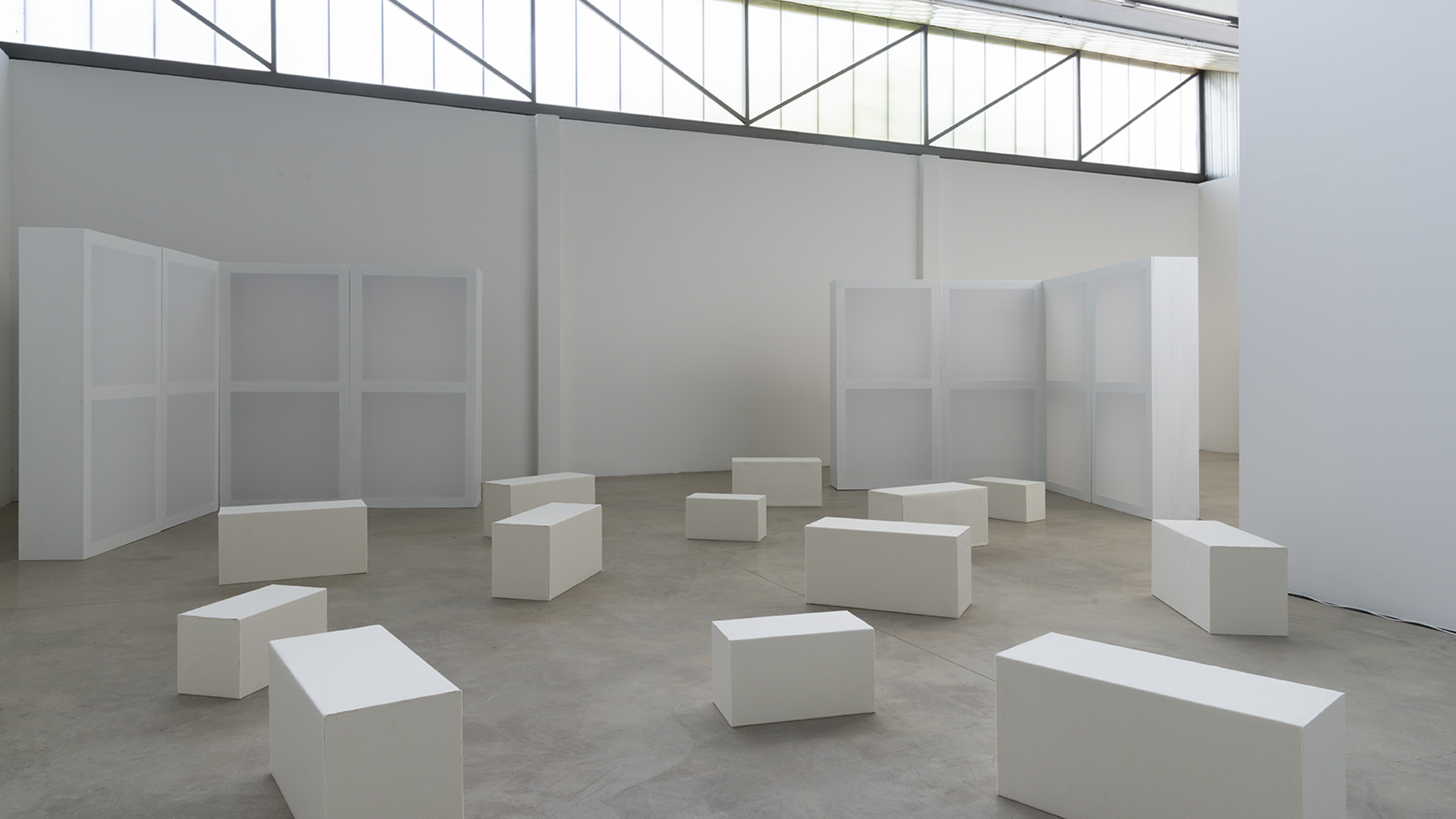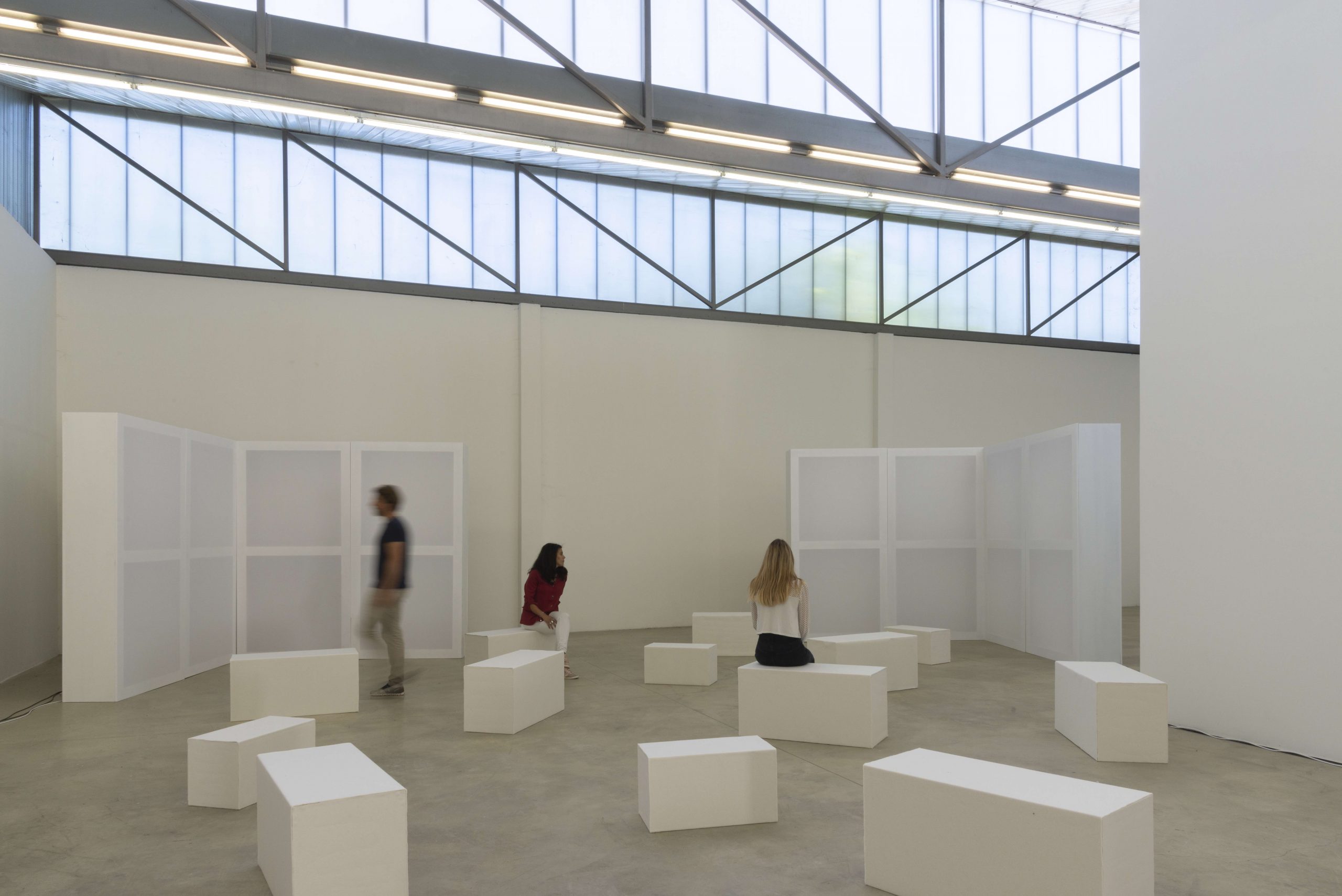ROBERT MORRIS – VOICE, 1974
The Venet Foundation is happy to announce this summer’s exhibition of Robert Morris’s Voice, 1974, a choice that will resonate well with the many works by this artist in the foundation’s collection.
Morris was one of the most important artists of the post-war period, particularly because of his ability to challenge prevailing principles and conventions in art. He was well-known for the performances he began to undertake in the early 1960s (often staging his own body), his work heralding Conceptual art, his early Minimal sculptures and his felt reliefs that he described as an “antiform.” His theoretical texts had a strong impact on effervescent New York art scene during that decade.
In 1974, he presented, simultaneously, at the Leo Castelli and Ileana Sonnabend galleries, a piece called Labyrinths – Voice – Blind Time, meant to put to rest, once and for all, the conception of artworks as necessarily visual through Foucauld-like labyrinths underscoring the carceral character of society. As an example, the Sculpture Park in Le Muy presents a prison-like structure (Labyrinth, 2012), as well as drawings Morris made with his eyes closed for his “blind time” series.
Voice is a four-part purely aural installation. We hear, sometimes successively and sometimes all at once, a reading of the entirety of the “Guinness Book of World Records”, a man’s description of a painful scar, and texts on the definition of schizophrenia and bipolar disorder written by pioneering psychiatrists in this field.
Just as modern art has abolished artistic genres, here the prevailing concept of gender is brought into disarray – truly “gender trouble” – by the inversion of the pronouns “he” and “she.”
As the sound resonates through the space, it attracts our ear and thus our attention to one or the other loudspeaker.
At Morris’s 1994 show at the Guggenheim, visitors could listen to this aural material in its entirety (3h30), but here the meaning lay beyond its utterance. Voice is a sound piece as powerful as any visual artwork.
Finally, also present is a poster that once launched a thousand commentaries, showing a shirtless Morris holding thick chains, flexing his biceps with metal power bands on his wrists and a spiked collar around his neck, wearing aviator sunglasses and a German army helmet. This was Morris’s answer to the artist Lynda Benglis’s notorious ad in Artforum, featuring herself nude holding a giant dildo between her legs. Morris’s piece is the fruit of an epic and sustained post-Minimal interrogation of the limits of decency and social constraints.
Photo credit: Jerome Cavaliere, Courtesy Venet Foundation
©2021 The Estate of Robert Morris / Artists Rights Society (ARS), New York

